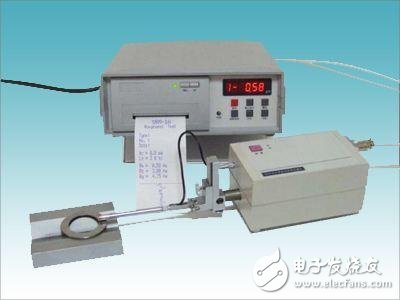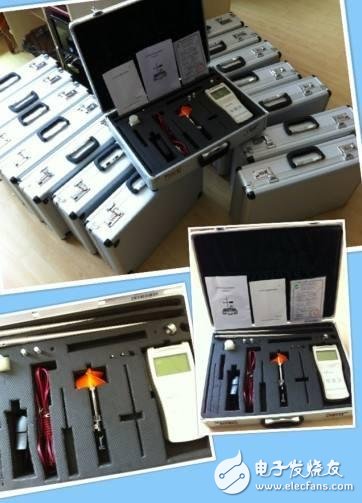For those who are not familiar with such products, the gyroscope sensor is a simple and easy-to-use positioning and control system based on free space movement and gestures. Flick the mouse on an imaginary plane, the cursor on the screen will follow it, and you can draw circles around the links and click buttons. When you are speaking or leaving the table, these operations can be easily achieved. The gyroscope sensor was originally applied to the helicopter model, and has been widely used in mobile and portable devices such as mobile phones (IPHONE's three-axis gyroscope technology). The principle of a gyroscope is that the direction pointed by the axis of rotation of a rotating object will not change when it is not affected by external forces. People use it to keep their direction based on this principle. Then use a variety of methods to read the direction indicated by the axis, and automatically transmit the data signal to the control system. We actually use this principle when riding bicycles. The faster the wheel turns, the less likely it is to fall, because the axle has a force to keep it level. Modern gyroscopes can accurately determine the position of moving objects. It is an inertial navigation instrument widely used in modern aviation, navigation, aerospace and defense industries. The main part of the traditional inertial gyroscope is a mechanical gyroscope, and the mechanical gyroscope has high requirements on the process structure. The basic idea of ​​modern fiber optic gyroscopes was put forward in the 1970s. After the 1980s, fiber optic gyroscopes have been developed very rapidly, and laser resonant gyroscopes have also made great progress. The fiber optic gyroscope has a compact structure, high sensitivity and reliable operation. Fiber optic gyroscopes have completely replaced mechanical traditional gyroscopes in many fields and become a key component in modern navigation instruments. In addition to the ring laser gyroscope, the development of fiber optic gyroscope at the same time. 1. National Defense Industry The gyroscope sensor was originally used on helicopter models, but it has now been widely used in mobile and portable devices such as mobile phones. Not only that, modern gyroscopes are instruments that can accurately determine the orientation of moving objects, so gyroscopes Instrument sensors are indispensable control devices in modern aviation, navigation, aerospace and defense industry applications. The gyroscope sensor was named by the French physicist Leon Foucault when he studied the rotation of the earth, and it has been the most convenient and practical reference instrument for aviation and maritime navigation attitude and speed. 2. Door opening alarm New application of gyroscope sensor: measure the angle of opening the door, when the door is opened for an angle, it will sound an alarm, or combined with the GPRS module to send a short message to remind the door is opened. In addition, the gyroscope sensor integrates the function of an acceleration sensor. When the door is opened, a certain acceleration value will be generated. The gyroscope sensor will measure this acceleration value. After reaching the preset threshold value, an alarm will sound. Or combined with GPRS module to send SMS to remind the door is opened. The alarm can also be integrated into the radar sensing measurement function, mainly when people move into the room will be measured by the radar. Dual insurance reminds theft, high reliability, low false alarm rate, very suitable for anti-theft alarm on important occasions. An acceleration sensor is an electronic device that can measure acceleration. Acceleration force is the force that acts on an object during acceleration, just like the gravity of the earth, that is, gravity. The acceleration force can be a constant, such as g, or it can be a variable. There are two types of accelerometers: one is an angular accelerometer, which is improved by a gyroscope (angular velocity sensor). The other is a linear accelerometer. The principle of linear accelerometer is the principle of inertia, that is, the balance of force, A (acceleration) = F (inertial force) / M (mass) we only need to measure F. How to measure F? Use electromagnetic force to balance this force. The relationship between F and current can be obtained. Only need to use experiments to calibrate this proportional coefficient. Of course, the signal transmission, amplification, and filtering in the middle are all about the circuit. Most acceleration sensors work according to the principle of piezoelectric effect. Acceleration sensor application: By measuring the acceleration due to gravity, you can calculate the tilt angle of the device relative to the horizontal plane. By analyzing the dynamic acceleration, you can analyze the way the device moves. But at the beginning, you will find that light measurement of inclination and acceleration does not seem very useful. However, engineers have come up with many ways to obtain more useful information. Gyroscopes measure angular velocity, and acceleration measures linear acceleration. The former is the principle of inertia, and the latter is the principle of force balance. The measured value of the accelerometer in a longer time is correct, but in a shorter time due to the existence of signal noise, there are errors. The gyroscope is more accurate in a short period of time, while it will drift and have errors in a longer period of time. Therefore, both (mutual adjustment) are required to ensure the correct heading. General Purpose Diode,General Purpose Rectifier Diode,General Purpose Schottky Diode,General Purpose Power Diode Shenzhen Kaixuanye Technology Co., Ltd. , https://www.icoilne.com

May 05, 2023